There’s something about naan that just hits different. It’s warm, soft, slightly chewy, with those perfect golden brown spots and a hit of butter or garlic.
You scoop it through curry, wrap it around grilled meat, or snack on it solo straight off the pan. Most people think it’s one of those things best left to restaurants with tandoor ovens and professional chefs. But here’s the truth: you can make ridiculously good naan at home, no tandoor required.
All you need is a hot pan, some basic ingredients, and a little time.
Let me walk you through how to make naan that’s fluffy, flavorful, and far better than store-bought.
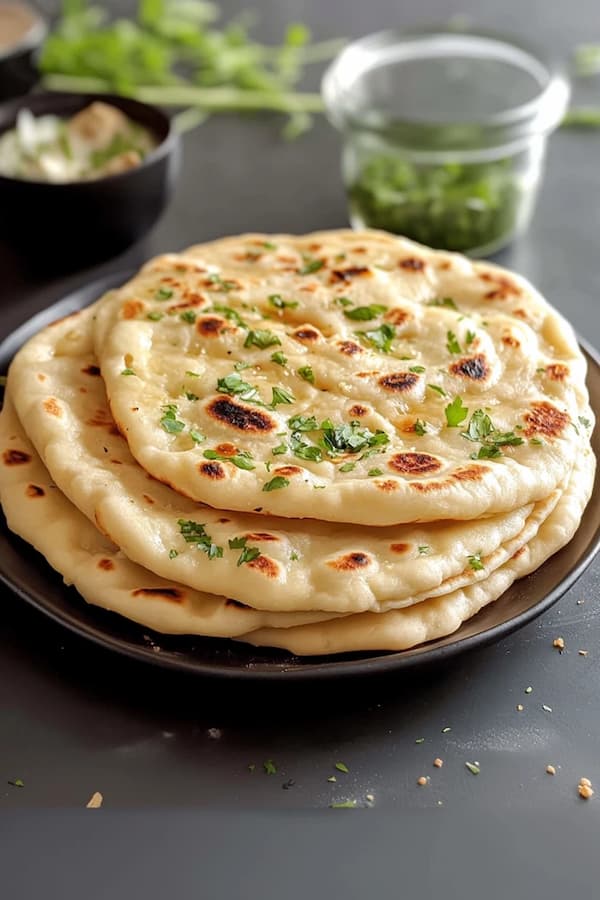
What You’ll Need (aka The Short Shopping List)
Before we dive into the how, here’s what to grab. Most of this you probably already have in your kitchen.
- 2 ¼ teaspoons active dry yeast (one packet)
- 1 teaspoon sugar
- ½ cup warm water (not hot)
- 2 ½ to 3 cups all-purpose flour
- ¼ cup plain yogurt (whole milk works best)
- ¼ cup warm milk
- 1 tablespoon oil (vegetable or canola)
- 1 teaspoon salt
- Melted butter or ghee for brushing
- Optional: chopped garlic, fresh cilantro, or nigella seeds for topping

Wake Up the Yeast
Yeast is the soul of good naan. You need it active and thriving to give that lovely rise. In a small bowl, stir the sugar into the warm water, then sprinkle the yeast over the top.
Let it sit for about 10 minutes. You should see bubbles and froth — it means the yeast is alive and ready to go. If nothing happens, toss it and try again with new yeast. Don’t skip this step. Dead yeast = flat, sad naan.
Mixing It All Together — Dough Time
Once the yeast is foamy, pour it into a large mixing bowl. Add the warm milk, yogurt, oil, and salt. Stir it up, then gradually add the flour, starting with 2 ½ cups.
Mix until it comes together into a shaggy dough. If it feels too sticky, add a bit more flour.
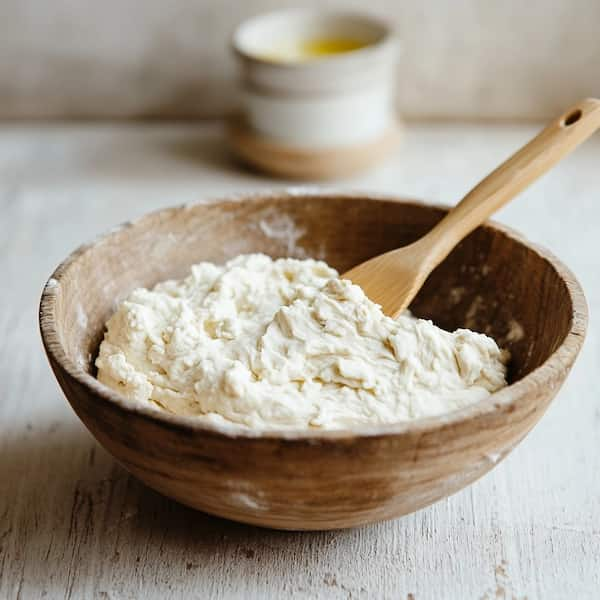
Then get in there with your hands and knead it for about 8–10 minutes until it turns smooth and soft.
No stand mixer? No problem. This dough isn’t tough to work with. Just knead it on a clean counter with a little flour dusted underneath.
Let It Rise — Give It Time to Grow
Cover the bowl with a damp towel or plastic wrap and set it somewhere warm. Let the dough rise until it doubles in size — this usually takes about 1 to 1.5 hours, depending on how warm your kitchen is. Don’t rush this part. The rise builds flavor and texture.

While it’s rising, you can prep your add-ons if you’re going for garlic naan or want to chop fresh herbs.
Prep Your Rounds
Once the dough has puffed up nicely, punch it down gently. Turn it out onto a lightly floured surface and divide it into 6–8 equal pieces. Roll each piece into a ball, then cover them with a clean towel to rest for 10 minutes.
This rest helps them roll out easier.
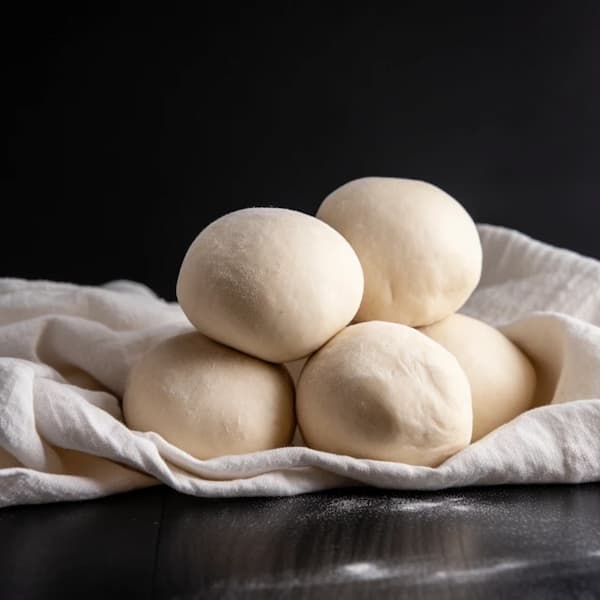
Now, roll each ball into an oval or tear-drop shape, about ¼ inch thick. Don’t worry about making them perfect — irregular shapes look more authentic anyway.
Heat Up — Get That Pan Smoking Hot
Here’s the trick to getting that signature blistered naan look: use a heavy skillet (cast iron works best) and crank the heat. You want it hot — like almost-smoking hot. Do not oil the pan.
Once your pan is ready, lay in one piece of dough. Let it cook for about 1–2 minutes. You should see bubbles forming on the surface. Flip it, and cook for another minute or so until both sides have dark brown spots and the dough looks cooked through.
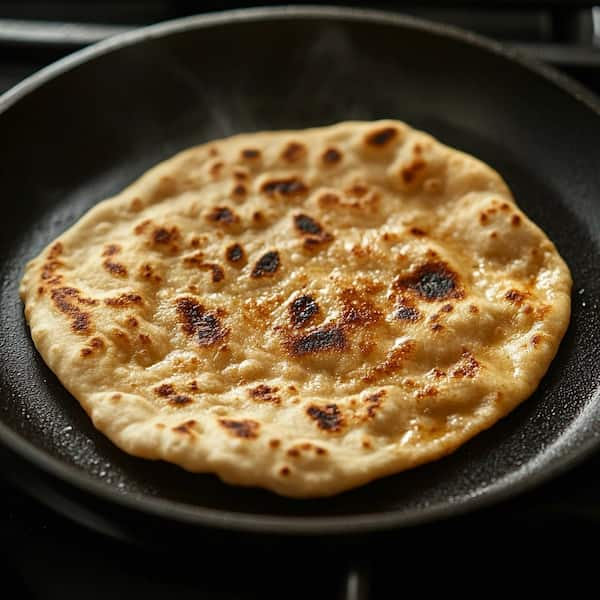
Remove it, brush it immediately with melted butter or ghee, and sprinkle with garlic or herbs if using. Repeat with the rest.
The First Bite — Yeah, You Made That
The first bite always surprises people. It’s soft yet chewy, buttery, warm, and just the right level of salty. The fact that it came from your own stovetop and not a restaurant kitchen makes it taste even better.
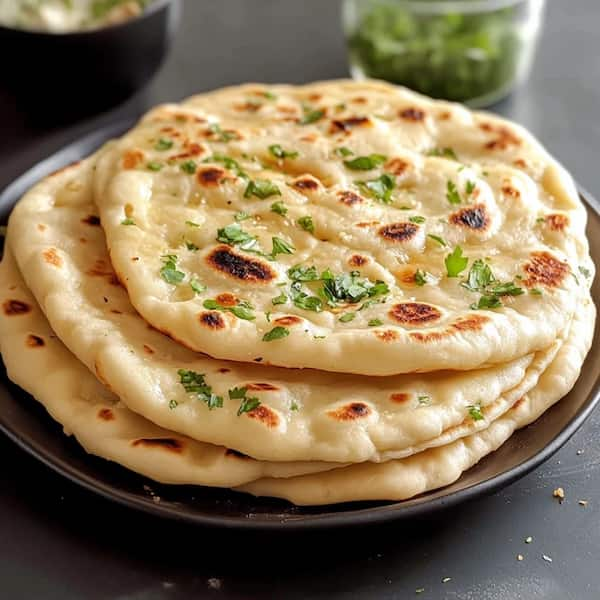
Once you get the hang of it, you’ll start playing with variations — add a touch of whole wheat flour, stuff it with cheese, or even make a sweet version with cinnamon sugar.
A Few Common Mistakes to Avoid
Even a straightforward recipe like naan can trip you up if you skip the basics. One of the most common errors? Rushing the yeast. You have to give it time to bloom properly — if you don’t see bubbles, it’s not active, and your dough won’t rise.
Another mistake is using a pan that’s not hot enough. A lukewarm skillet won’t give you those signature brown blisters, just pale, limp bread.
Then there’s the flour situation — too much and your dough turns stiff instead of soft and pliable.
Finally, don’t forget to cover the dough balls while they rest. If they dry out, rolling them becomes a battle, and they won’t cook evenly. Keep these points in mind and you’ll be well on your way to naan success.
Level Up — Make It a Meal
Naan is delicious on its own, but pairing it with the right dish takes things to another level. For a classic combo, serve it with rich butter chicken or creamy paneer tikka masala.
Want something meat-free? Scoop up some spicy chickpea curry or comforting dal. If you’re in the mood for grilled flavors, naan makes the perfect partner for smoky lamb kebabs or spiced chicken straight off the grill.
You can even use it to sop up shakshuka or wrap around scrambled eggs for a savory breakfast twist.
However you pair it, naan brings it all together.


